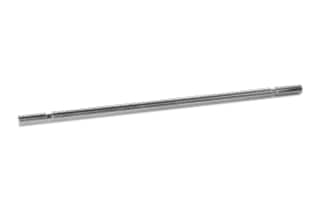
|
Separation Mode |
Reversed Phase |
|
Maximum Pressure |
6000 psi (415 Bar) |
|
Particle Shape |
Spherical |
|
Particle Size |
4 µm |
|
Pore Size |
60 Å |
|
Format |
Cartridge |
|
System |
HPLC |
|
USP Classification |
L8 |
|
Inner Diameter |
4.6 mm |
|
Length |
250 mm |
|
UNSPSC |
41115709 |
|
Application |
Carbohydrate |
|
Product Type |
Cartridge Columns |
|
Units per Package |
1 pk |

Carbohydrate Cartridge Column, 4.6 mm x 250 mm, 1/pk
Overcome the challenges presented by the separation of sugars with the Waters Carbohydrate Cartridge Column. The small differences in the chemical and physical properties mean that more sophisticated lab equipment is required to carefully separate the compounds. The columns offer control of the content and quality of commercial foods and beverages during the manufacturing process to ensure compliance with regulatory requirements and customer satisfaction. Analyze and quantify the primary ingredients of food and beverages with the Waters Carbohydrate Cartridge Columns.
Packed with 4-μm spherical silica, the Waters Carbohydrate Cartridge Column has been designed to separate 5 monosaccharides and disaccharides with baseline resolutions in less than 12 minutes. The column can be run at 1.4mL/min to attain 12-minute separations. The columns are designed to give optimum speed, ideal resolution, and maximum longevity. The reversed-phase is ideally suited for the separation of mixtures containing monosaccharides and oligosaccharides up to a degree of polymerization (DP) of 8.
The columns are prepacked and disposable, and they require reusable end-fittings that are available separately for purchase. When the column is changed, simply replace the cartridge and use the end-fittings again.
Use the LCMS Certified Clear Glass 12 x 32 mm Screw Neck Vial, with Cap and Preslit PTFE/Silicone Septum, 2 mL Volume, 100/pk to store your analytes securely prior to analysis or after collection. The vials are manufactured under strict conditions using tightly controlled processes to ensure that they supply the quality required for chromatography analyses. They are also tested with mass spectrometers to ensure that no contaminants impact your analysis.
See our entire product portfolio to browse through the available range of lab equipment. Select items from our catalog and shop for lab equipment.
What Is Meant By The Term “Developing” In Chromatography?
During chromatography, if the components to be separated are colorless, then these separated components on the chromatogram are not visible. Their presence is detected by development. This is usually done through a couple of methods. One way of doing this is by spraying a suitable reagent (called developing reagent) on the chromatogram. Another way is by placing the chromatogram in an iodine chamber when various components become visible. This process is called the development of chromatograms.